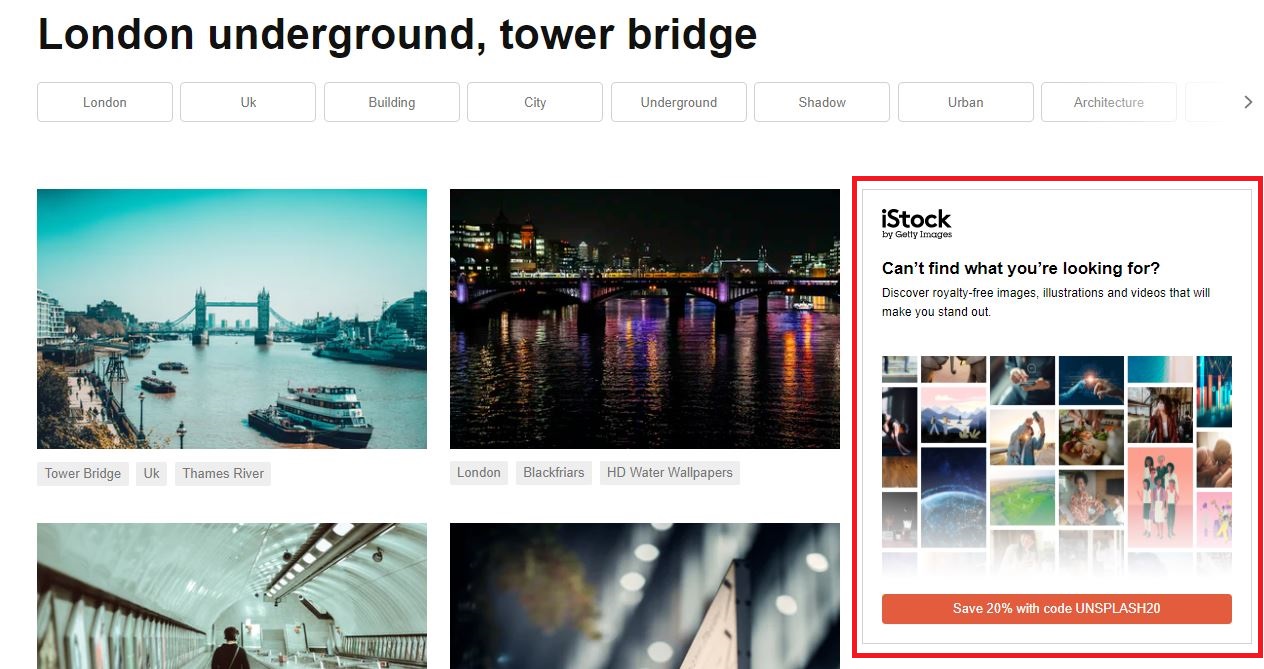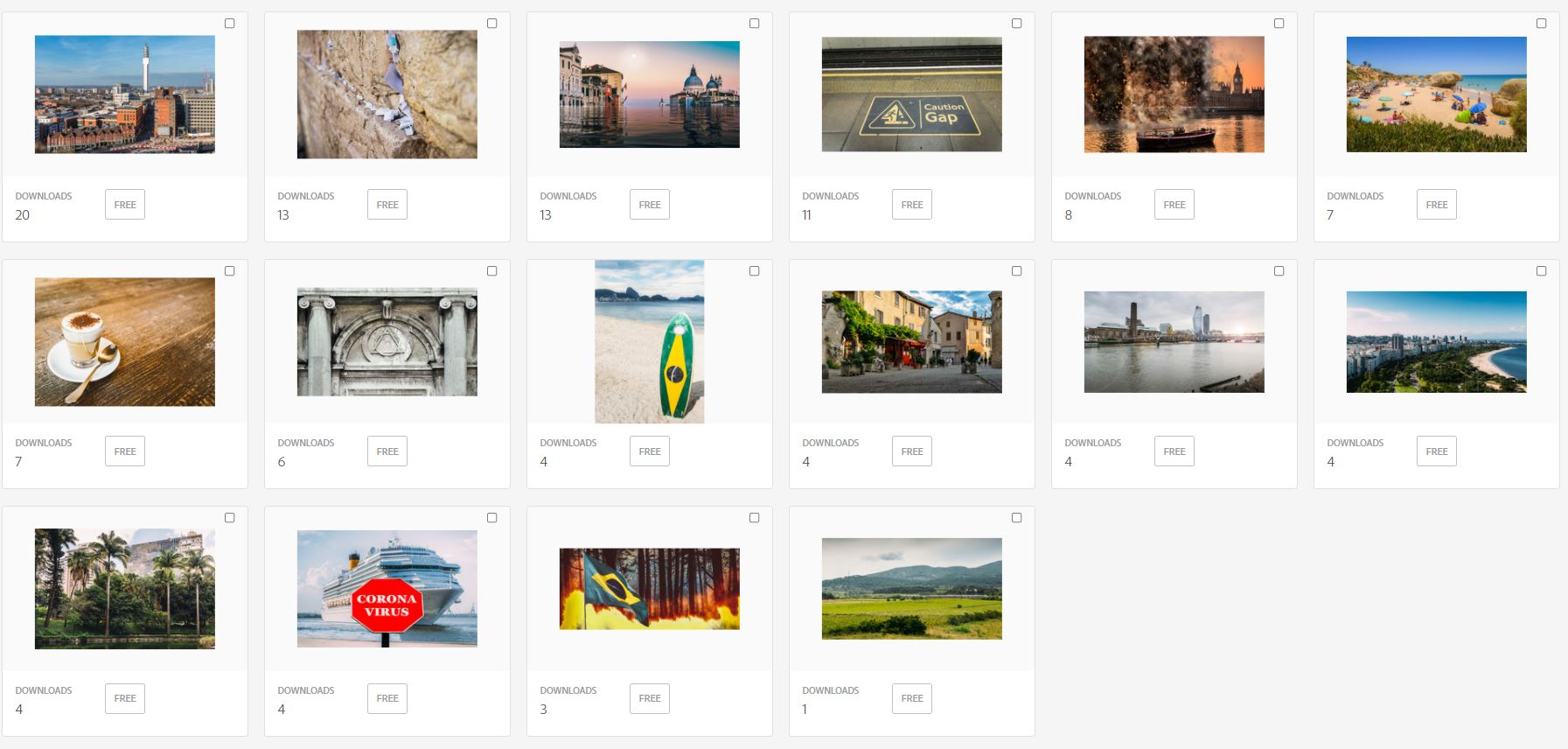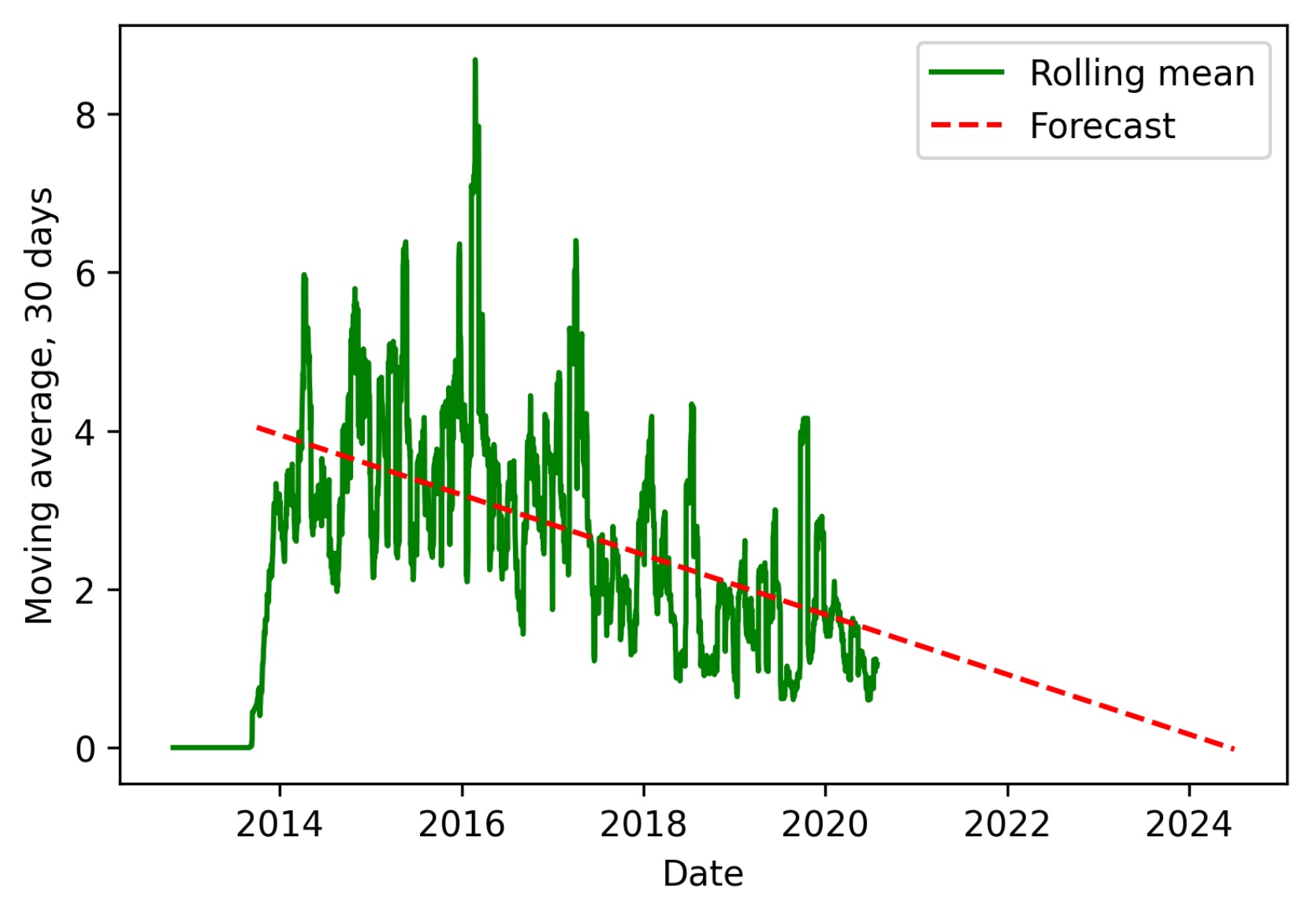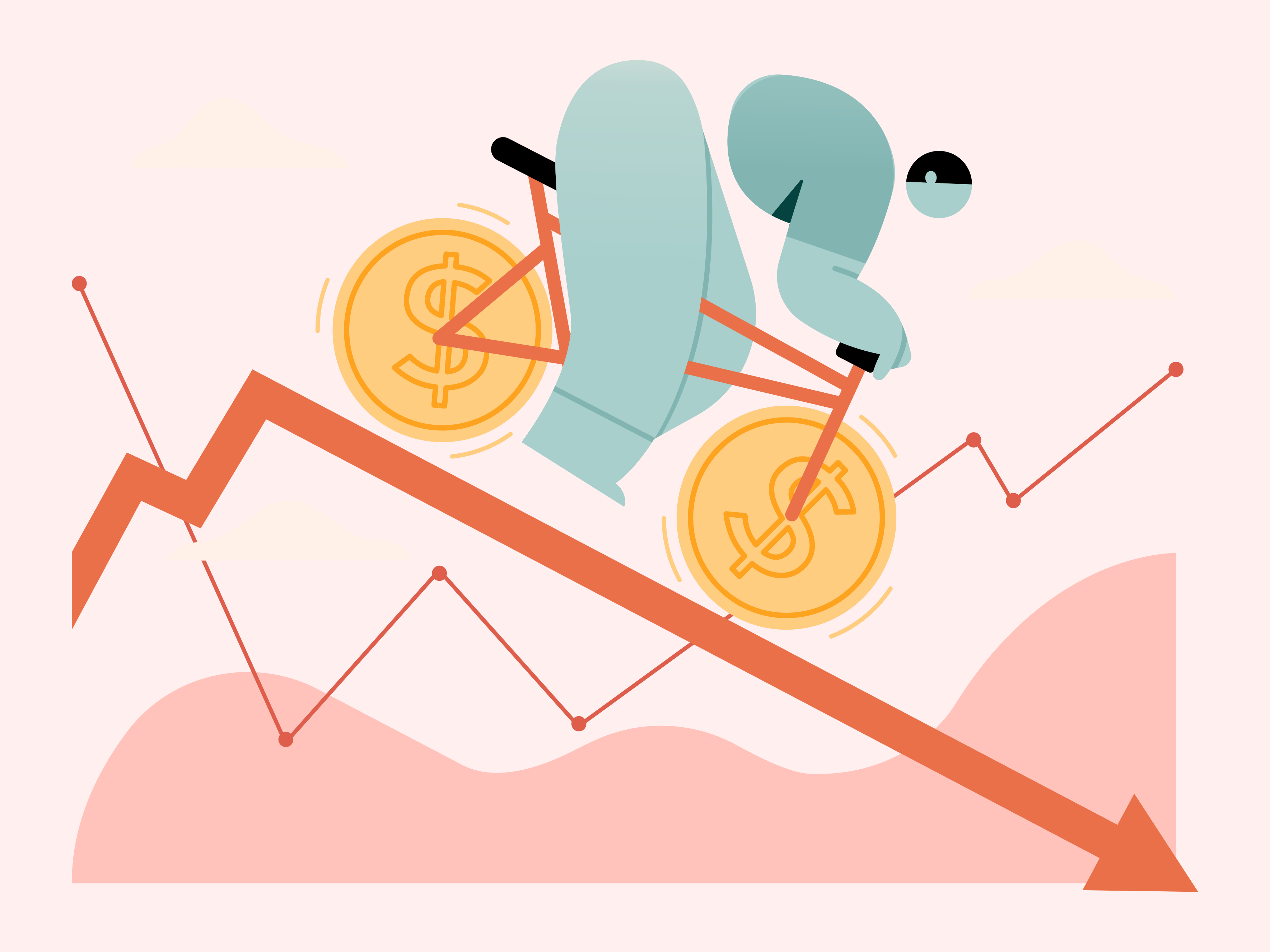During the past few years, many contributors have noticed that the average price of their images sold have decreased considerably. The reasons may be complex, but are mainly down to a combination of: market oversaturation, technological advances, and detrimental changes to contributor agreements.
More recently, earnings have come under further pressure as a result of the desire by buyers to acquire premium photography content for free, also widely known as “Free + Premium = Freemium”, with many agencies catering to this growing demand.
In this zeitgeist post, we’ll discuss the latest free-download trends at Microstock agencies.
Table of Contents:
People just LOVE free stuff
Let’s face the facts, people just love free stuff. Why pay for something if you can get it for free? Perhaps you’re even using a cracked version of Adobe Lightroom, Photoshop and/or other photography/videography software. Everybody knows that pirating is widespread, even if legally licensing such software, as in Adobe products, is a small investment towards the business.
If you’re over 30, you may recall during the dawn of the Internet age (late-1990s) pirating became controversially apparent with the likes of Napster, where users were able to share MP3 music files via peer-to-peer transfers.
Soon after, in the early 2000s, a multitude of peer-to-peer file-sharing Torrent sites, such as Kazaa, Limewire, Morpheus and more recently, Pirate Bay emerged thus providing a vehicle for users to share pirated software (including malware). What does this have to do with photography licensing?
The rise in popularity of free-download photo sites
Leaping forward some 10 years, savvy entrepreneurs have taken lessons from the above by legitimately and successfully adapting the business model for the photography licensing age. Unsplash, which emerged in 2013, has rapidly become the largest of the free-download sites and is dedicated to sharing stock photography under a broad license which grants users the following broad rights:
… irrevocable, nonexclusive, worldwide copyright license to download, copy, modify, distribute, perform, and use photos from Unsplash for free, including for commercial purposes, without permission from or attributing the photographer or Unsplash
Although many other free-download sites have emerged to compete with Unsplash, such as Pixabay and Pexels (both acquired by Canva in 2019), none can rival the power of Unsplash, especially now that they are on the up and up having being acquired by Getty.
Unsplash’s impressive collection
Although the Author remains highly skeptical of the “free-download” model, he cannot help but be strangely impressed with some of the content available for free-download. Nevertheless, the collection currently remains limited in size and niche subjects compared to the big paid sites.
The quality on offer suggests high-quality curation from the Unsplash moderation team with some of the more generic content being able to undoubtedly compete with the paid sites – just have a quick search yourself for results when searching for popular cityscapes within London and New York for instance:

Downloaded from Unsplash. Copyright: Carl Solder
Unsplash is becoming a big player (Getty has taken notice)
Love or hate them, Unsplash is becoming a big player in the stock photography industry by boasting over 257,000 contributors and generates more than 19 billion photo impressions per month on their growing library of over 3 million images. See a link to Unsplash’s detailed stats, including a map of real-time downloads.
In early 2021, Getty Images, one of the largest stock agencies around, took notice of their phenomenon growth and acquired Unsplash for an undisclosed sum, which was a watershed moment reverberating through the stock photography world. Now, just why would a Microstock agency be interested in a free-download site such as Unsplash? Read on to find out.
How microstocks are using the free-download concept to attract buyers
In the similar way that some supermarket chains literally give away small free samples to customers in the hope that they will buy their product(s), Getty is basically now using Unsplash as a feeder for paying customers. Let’s illustrate this with an example.

Shopkeeper offering a free sample of 'alheira' in Caparica, Portugal
Suppose a customer is looking within Unsplash for a Freemium (to reiterate, Free + Premium) image of a London skyline for his/her travel blog. The customer finds that ideal image, downloads it and embeds into the blog post with no issues. The customer then decides that they need a more specific image of let’s say, passengers at a London Underground with a fast-train approaching at Tower Bridge Station.
Upon a quick search, they do not find any images available at Unsplash as it’s just too damn specific of a search, also only available to be licensed as an editorial.
Turning free customers into paying customers, at least in theory
In the above example, the clever digital marketing people at Unsplash will happily try to direct the customer to head over to the iStockphoto / Getty website and even offer the customer a discount of 20% by using a special code.

An offering to buy images from iStock
With one click, the customer would be directed to the following page with 43 more relevant images to choose from.
Getty’s digital marketing strategy
Supposing that the customer does eventually decide to pay for a license, this would be considerably less costly to Getty than trying to entice the customer via Google Ad Words and other digital marketing campaigns. Thus, bidding for “London” or “London Underground” within a Pay Per Click campaign would be hugely expensive for any company and may not have the desired return on investment.
Naturally, the vast majority of Unsplash customers will not be enticed to pay as little as $1/image (before even a 20% discount). After all, the reason why they went to Unsplash in the first place was to download free photos! Getty knows this and the brains at Getty have calculated that even a small percentage of conversions from free-download customers to paid customers would render this a successfully viable strategy for Getty.
Adobe Stock has joined in on the Freemium bandwagon
Adobe Stock has had a free collection since 2020 and according to them, was successful in converting free customers to paying customers, “resulting in added revenue for the larger Contributor community”. A dubious statement at best and we should take it with a grain of salt.
To many contributors’ surprise, in early-June 2021, Adobe Stock joined in on the free-download business strategy with an interesting proposal, also known as the “Adobe Stock Upfront Royalty Payment Opportunity”.
However, this time round there was something tangible for contributors. Adobe Stock contributors would be able to nominate eligible photos that have received no more than four downloads in the past 12 months to the program. In return, upon review by the Moderation Team and if successful, each image would be paid a flat up-front rate of $5, with the image(s) being available for download in the free collection for 12 months. Thereafter, the image(s) would be automatically returned to the paid collection.
Although this particular opportunity expired in July 2021, there may be further opportunities at Adobe Stock and surely at other agencies will adopt this model. See link to discussion on the MicrostockGroup Forum for reactions from contributors.
Some impressive content from Adobe Stock
Currently, the free-download collection boasts over 304,000 images, which includes the following impressive content within the top results:

A free collection from Adobe Stock
Practical example of selected assets for the free collection
To illustrate how the above opportunity has worked in practice, back in June 2021, the Author of this post nominated a total of 704 eligible images from his portfolio of which only 16 of the following were accepted, thus earning him an upfront payment of $80 for the time being.

Chosen images for Adobe Free collection
Note that Adobe Stock is still at the first of many rounds of reviews, as contributors have been advised.
Threats and opportunities for contributors
Starting with threats from this new business model, the first thought that may go through your mind should you consider to “give away your images for free” is that they will inevitably lose all their present and even future commercial value.
That may well be the case, but it’s important to ask yourself, as objectively as possible, whether the images have much value to begin with! Suffice to say that some of the above images, which have been selected by Adobe Stock for the free collection, have not earned even $5 each in their lifetime, even when spread across multiple agencies, to compete with the upfront payment opportunity offered.
All images inevitably have a half-life

Decline of earnings from a single photo over the years, eventually reaching zero
As we have already shown in the single photo earnings report, not only that each photo has a half-life period during which the earnings decrease two-fold, but also it has a seasonality.
Those that have earned more $5/each will probably not continue to earn much more anyway. For instance, the following digital composite was popular during the initial stage of the pandemic (March/April 2020) when the cruise ship industry was severely affected. In fact, the Author created some concepts that sold well even before the shit hit the fan as discussed in this blog post.
Even though the below image had early success, for the past year it has barely sold as newer trends have emerged to highlight this concept, plus the official name now is “Covid-19”, not “Coronavirus”:

Each image will became less relevant with time
In addition, the average age of the above collection is about four years, so in any case they are likely past their “shelf life”.
What about the same image placed within other agencies
Another concern is that since all the above images were placed on multiple non-exclusive Microstock agencies, wouldn’t that automatically mean that customers will stop buying the same image on a paid site? Perhaps, but chances are:
- The customer wouldn’t even know that such image is available for free over at Adobe Stock
- Or even if they do, they may not have an account at Adobe Stock
- Or most likely of all, just too lazy to take action as it’s so cheap anyway over at Shutterstock as part of those crazy subscription deals (250/images a month allowance, for instance)
This theory is most clearly highlighted by images which are available on both Alamy (high-charging agency) and Shutterstock (low-charging agency) as Royalty-Free, which may one day earn a contributor $100 and 10 cents for the exact same image and on similar licensing terms. The theory that few Alamy customers shop around for cheaper deals is currently without major proofs or debunking.
Opportunities
Moving optimistically onto the opportunities of the Adobe Stock model, the obvious benefit of the model is being paid immediately $5 per image selected. As mentioned earlier, this is occurring precisely during a time when the average return of images is dropping year-on-year like a stone.

General earnings tend to fall with time. Is it the end?
As mentioned in the introduction, the reasons for the drop in earnings are complex but mainly down to an oversupply of images, technological advances (cheaper camera equipment with better resolutions) and worsening contributor royalties. The latest examples have been Alamy in June 2019 reducing rates by 20% and Shutterstock (in)famously introducing a revised rate schedule, which resets every January 1st, starting at as little as 15% per image.
From relevant discussions within the likes of the MicrostockGroup Forum, it was common just 10 years ago that a strong travel portfolio would yield an average return per download of up to $7/image/per year. Fasting forward to the present-day, for a similarly strong travel portfolio the average return per download is likely to be closer to $1/image/per year and that may be pushing it!
Perhaps in 2030 it will be as low as 25 cents/image/year, which would be practically giving it away for free and earning all in crypto-currencies.
Conclusion – Philosophical discussion
The writing is on the wall, as traditional Microstock agencies have embraced the free-download business model in the faint hope that customers may be enticed to open their wallets in the paid collection.
The visionary management at Adobe Stock have been savvy enough to offer contributors a reasonably fair fee and terms and most contributors have been excited about the opportunity. Adobe Stock doesn’t exist in a vacuum, so we should fully expect others agencies, such as Shutterstock to follow suit. Although history would suggest that such contributors should not expect such generous terms from the likes of Shutterstock.
Nobody can deny that the underlying trend is for customers to expect even cheaper / Freemium images and eventually the same to occur with footage, which on average requires more investment than photos.
Analyzing the big picture, an argument can be made to contemplate cashing in on your assets now while they still have some intrinsic value, rather than in a few years when they will be worth even less or maybe even worthless. Can assets get any cheaper than currently on offer at Microstock agencies without being free? Yes, they can and anybody contributing to iStock can attest to earning as little as 1 cent downloads!
As the photography licensing industry continues to mature, more disgruntled contributors will scream that “ENOUGH IS ENOUGH” and simply pull their assets and quit the industry, as many already have. Others, may clearly see the opportunities presented and fully embrace new business models as discussed and as a result of patience and foresight, do reasonably well financially.
The only constant in life is change. Contributors should brace themselves for some short-term turbulence, but with enough patience, discipline and a strong work ethic, seek to reap benefits from opportunities when the storm finally clears.




